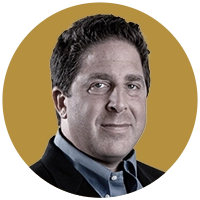Higher Ed’s New Loyalty Oaths
In theory, the embrace of diversity, equity and inclusion should be a good thing. In practice, though, it is not.

In theory, higher education’s embrace of diversity, equity, and inclusion should be a swell thing. In practice, it is not. Understanding why that is and how to do better is crucial if colleges are to be places of inclusiveness, ideas, and free inquiry.
Diversity, equity and inclusion bureaucracies have sprawled across higher education. One review of 65 universities in the Power Five athletic conferences found that the typical institution has 45 diversity staff on payroll, or more than four times as many employees as are devoted to supporting students with special needs (even though such supports, unlike DEI, are a legal obligation).
What exactly do these officials do? The National Association of Diversity Officers in Higher Education describes itself as “a leading voice in the fight for social justice” and lays out its plan for political action by “creating a framework for diversity officers to advance anti-racism strategies, particularly anti-Black racism, at their respective institutions of higher education.”
The organization emphasizes that this effort “requires confronting systems, organizational structures, policies, practices, behaviors, and attitudes.” Yet we’ve increasingly seen what all of this looks like in practice — and it’s not pretty.
Just recently, a professor at New York University, Jonathan Haidt, co-author of “The Coddling of the American Mind,” triggered an uproar with his announcement that he felt compelled to quit the Society for Personality and Social Psychology over its new DEI directives.
In explaining his decision, Mr. Haidt noted that, under a new policy governing the annual conference, all scholars seeking to present research “are now required to submit a statement explaining ‘whether and how this submission advances the equity, inclusion, and anti-racism goals of SPSP.’”
Mr. Haidt observed that much research has nothing to do with those goals. Moreover, trying to fit all research into them, much less ensure that all research reaches the “right” conclusions, is a political project, not a scholarly one. An SPSP spokesman conceded as much, telling the NYU student newspaper that the integrity of research is now just one value among many for the organization.
In accord with the dictates of DEI, the spokesman explained, research will henceforth be “evaluated based on its scientific strength, rigor, contribution to our field, and interest-value to our audience,” and then, “separately” on the degree “to which [it] promotes equity, inclusion, and anti-racism.”
Unfortunately, the kinds of “diversity, equity, and inclusion” statements demanded by the Society for Personality and Social Psychology are increasingly common, including as a condition for employment or promotion.
These statements are frequently scored on rubrics that reward the “right” kinds of answers (those that embrace the language of systemic racism) and penalize those who get things wrong (such as those who espouse the virtues of colorblindness).
Such declarations are now required for about one-in-five academic jobs. Nearly a quarter of universities now require DEI statements for tenure evaluations and 40 percent say they’re considering them.
The costs of all this are high. It’s not hard to appreciate the ways in which all of this may leave faculty — especially junior faculty who are chasing research funding and job security — reluctant to study topics that may run afoul of DEI dogma.
This could have a devastating effect on research into pressing questions like school discipline, welfare, criminal justice, policing, or immigration, by silencing important perspectives and ensuring that urgent questions never get asked.
In 1915, the American Association of University Professors, under the leadership of progressive icon John Dewey, issued its famed “General Declaration of Principles.” The AAUP proclaimed, “The university cannot perform its [primary function] without accepting and enforcing to the fullest extent the principle of academic freedom.”
A quarter-century later, the AAUP and Association of American Colleges restated those principles in the “1940 Statement of Principles on Academic Freedom and Tenure,” thundering that the “common good depends upon the free search for truth and its free exposition. Academic freedom is essential to these purposes and applies to both teaching and research. Freedom in research is fundamental to the advancement of truth.”
Those are timeless, essential values of higher education. Today, they are increasingly at risk. The bitter irony is that it’s in service of an admirable, well-meaning ideal. Colleges should value diversity: demographic, intellectual, and otherwise. It’s simply too high a price to pay, though, if these things come at the cost of free inquiry and unbridled exploration.

